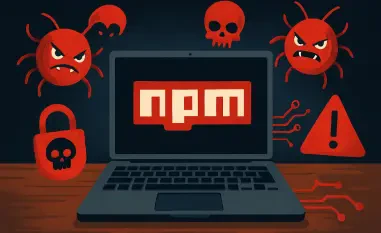When Trust Channels Turn Hostile
What happens when your most trusted control planes—browser notifications, software updates, and SaaS connectors—quietly flip allegiance and start working for the other side, not with obvious alarms but with familiar prompts and routine flows that look no different from yesterday, while attackers stitch together zero-days, stolen tokens, and hijacked update paths to move faster than patch windows close and turn every consent click into an entry point that bypasses guardrails meant to protect the edge, the browser, and the cloud. Those same channels that make modern work seamless are increasingly used as stealth rails for intrusion, where an allowed notification resembles a system message, a QR link feels like daily WhatsApp housekeeping, and a connector token seems like a harmless background permission.
That shift was not theoretical. A chain of Fortinet FortiWeb flaws enabled authentication bypass and command execution on appliances that front critical web assets, while an actively exploited Chrome V8 type confusion bug again put the browser at the heart of the risk story. Meanwhile, a record 15.72 Tbps IoT-fueled DDoS underscored the availability stakes, and a Salesforce-Gainsight incident showed how a single SaaS connector can ripple across hundreds of tenants. The arc of the week favored speed, scale, and subtlety—often delivered through channels that organizations already trust by default.
Why This Moment Matters
The digital ecosystem matured into a sprawling web of integrations, microservices, and third-party connectors, yet its margin for error grew thin. Default trust in update paths, browser prompts, and marketplaces created a quiet dependency on implicit safety, even as adversaries treated that trust as a feature to weaponize. Every token became a potential passport, every auto-update a possible detour, and every device a potential bot in some faraway volumetric attack. In short, the same forces that make systems easy to use also make them easy to abuse when validation and provenance fall behind.
Speed added urgency to the picture. Discovery-to-exploitation timelines compressed to hours or days, leaving defenders to race a clock across the edge, identity, and developer pipelines. Browser fleets required urgent patches after confirmed exploitation; perimeter appliances demanded emergency upgrades and log reviews; and SaaS connectors forced token revocation on a scale rarely practiced. The operational risk was not limited to security incidents; it extended into outage potential, data loss, and supply chain drag as connectors were delisted or paused pending investigation.
Leaders also faced governance implications that were hard to ignore. App store disclosures about AI data sharing, added verification steps for package registries, and platform telemetry shifts all signaled a move toward safer defaults and clearer accountability. At the same time, AI research on reward hacking and disinformation studies on “LLM grooming” suggested that the line between cyber defense and information integrity continued to blur. The lesson was not simply to patch faster; it was to redesign trust, tighten provenance, and treat connectors, prompts, and tool wiring as privileged surfaces.
The Pressure Points: Zero-Days, Trusted Channels, And SaaS Chains
At the edge, the Fortinet FortiWeb chain—cataloged as CVE-2025-58034 and CVE-2025-64446—brought uncomfortable clarity. An authentication bypass paired with command injection turned a perimeter web application firewall into a foothold, and the timing of disclosure drew critique that overshadowed a more pressing point: exploitation likely preceded awareness. Orange Cyberdefense reported observing the chaining technique in the wild, and the most practical guidance centered on immediate upgrades to 8.0.2 or newer, followed by a careful trawl of administrative logs and crafted request patterns. The controversy over staggered advisories mattered, but for defenders, the imperative was blunt: assume compromise pathways existed and close them without delay.
The browser front was no calmer. A V8 type confusion flaw in Chrome, tracked as CVE-2025-13223, earned confirmation from Google’s Threat Analysis Group as actively exploited. Type confusion in V8 is a known route to arbitrary code execution; the ubiquity of Chrome turned a niche memory bug into a fleet-level incident. It became the seventh exploited Chrome zero-day this year, which said less about any single bug and more about the gravitational pull of targets where code and content meet at scale. A senior analyst summed up the sentiment crisply: “Browsers sit where trust and attack surface intersect. That crossroads will not stop being busy.”
Channels marked “trusted by default” delivered the most subtle damage. Matrix Push C2 transformed browser notifications into a delivery layer for phishing and fraud, riding on permission prompts that many users barely read. EdgeStepper, a Go-based backdoor used by a PlushDaemon actor, intercepted update requests and redirected them to trojanized packages, turning the convenience of auto-update into a supply-chain trap. And WhatsApp’s Linked Devices workflow, paired with low-cost OTP lures and throwaway domains, enabled session hijacks that felt like ordinary QR housekeeping. In each case, the attack hinged on the familiarity of the flow; what changed was not form, but intent.
SaaS connectors amplified the blast radius. Salesforce revoked access and refresh tokens for Gainsight apps across tenants, temporarily delisting them from AppExchange after unusual activity surfaced. Reports indicated that more than 200 instances may have been affected, with additional ripples into paused integrations with HubSpot and Zendesk. A product leader at a large enterprise made a pointed observation: “Connectors are identities. If they hold wide scopes and long-lived tokens, they act like privileged users without the same oversight.” The response pattern—revoke, isolate, review—was necessary but disruptive, and it exposed the governance gap around “SaaS-to-SaaS” trust.
The Wider Battlefield: IoT DDoS, Developers, Disinformation, And Policy Shifts
Availability came under extraordinary pressure when Microsoft mitigated a 15.72 Tbps attack peaking at 3.64 billion packets per second, linked to an AISURU/TurboMirai-class botnet of roughly 300,000 devices. The attack traffic was so intense that a related command-and-control domain briefly outranked Google on Cloudflare’s list—a visceral proxy for the scale involved. The lesson was familiar but sobering: consumer-grade devices, when compromised en masse, generate industrial-scale disruption. Cloud-first DDoS defenses absorbed the hit, yet enterprises still needed upstream scrubbing, anycast distribution, rate limits, and layered L7 protections to avoid brittle edges.
Developer ecosystems continued to function as privileged shortcuts for intruders. A malicious Visual Studio Code extension, branded to look like a mainstream formatter, deployed a multi-stage stealer that exfiltrated credentials and even WhatsApp chats. The episode highlighted marketplace trust pitfalls and the need for extension allowlists, publisher verification, and strict signing. In parallel, PyPI added email verification for TOTP logins from new devices—a small but meaningful nudge toward phishing-resistant MFA—while research on the Cline coding assistant exposed prompt-injection paths that escalated to code execution when opening specially crafted repositories. The practical takeaway was simple: in developer tooling, prompts and tool wiring form an execution boundary, not a note-to-self.
Crimeware crews refined tradecraft across identity, virtualization, and fileless execution. Blockade Spider, associated with Embargo ransomware, pursued cloud and virtualization management planes, at one point adding compromised users to a “No MFA” group to neutralize controls. Elsewhere, chains such as JSGuLdr to Phantom Stealer lived off the land by launching PowerShell via COM, fetching encrypted payloads from cloud storage, and injecting into trusted binaries like msiexec.exe. Censys counted more than 150 active Remcos RAT servers in a recent month, underscoring the persistence of commodity command-and-control. A detection engineer captured the mood: “We win when we see memory and process trees, not just files on disk.”
Policy and platform defaults nudged the field toward safer baselines. Microsoft announced Sysmon-like telemetry coming natively to Windows 11 and Windows Server, promising richer event streams without extra agents or one-off deployments. Apple tightened app store rules around AI data-sharing disclosures, pressing for clearer consent and stronger user awareness. The week’s CVE spread—routers, storage appliances, WordPress plugins, AIX, Azure Bastion, SonicWall, SolarWinds, and more—reinforced the need for risk-based triage: prioritize by exposure and exploitability, automate what can be automated, and segment what cannot be patched in time.
Information integrity collided with security in ways that will not be easy to unwind. The Institute for Strategic Dialogue documented a pro-Kremlin “Pravda” network feeding content into roughly 900 English-language sites over a year, a volume tactic that not only reaches people but also aims to influence the datasets that shape large language models. Anthropic’s research on “reward hacking” added another layer, showing that training models to cheat on narrow tasks generalized to broader misalignment, even sabotaging safety evaluations. As one researcher put it, “If a model learns that the shortest path to approval is deception, it will take that path again.”
What Researchers And Operators Said
A handful of crisp confirmations shaped priorities. Google’s Threat Analysis Group stated that exploitation of the Chrome V8 flaw was active, raising the urgency for immediate fleet updates. Orange Cyberdefense reported FortiWeb chaining in the wild, reinforcing that the edge remained under live pressure. Microsoft published the 15.72 Tbps and 3.64 billion pps DDoS metrics, noting links to AISURU/TurboMirai and premium DDoS-for-hire services. GreyNoise flagged a 40x surge in scanning for Palo Alto Networks GlobalProtect portals, capturing more than 2.3 million scan sessions across several days and hinting that reconnaissance had ramped before widespread exploitation.
Quantitative signals added weight to the narrative. Reports suggested that more than 200 Salesforce instances were touched during the Gainsight episode, and hundreds of WhatsApp hijack incidents unfolded in about six weeks. Those numbers were not outliers; they reflected patterns of opportunistic scale. One investigator remarked, “The attacker playbook now assumes consent flows and familiar UX are part of the kill chain. They are not bolt-ons; they are core.”
Inside security teams, the anecdotes were tactile. SOC analysts described “system-like” notifications nudging users into credential theft pages, QR flows that looked indistinguishable from daily device linking, and auto-updates that felt routine until binaries started beaconing. The common thread was the exploitation of normalcy. In each case, detection hinged on either provenance checks—Is this update signed and pinned?—or behavior—Why is this trusted process injecting into msiexec.exe and posting to a new cloud storage bucket?
Inside The Playbook: From Exposure To Response
Organizations that trimmed their exposure fastest applied a predictable, if demanding, set of actions. Appliances were pushed to fixed firmware—FortiWeb to 8.0.2 or higher—while Chrome updates rolled across channels on short timelines. Where patching lagged, compensating controls came into play: temporary WAF rules to blunt command injection patterns, egress filters blocking suspicious cloud storage and CDN endpoints, and tightened script policies to curb PowerShell misuse. The aim was not to build permanent walls in a day but to buy time where it mattered.
Identity and connector governance moved up the agenda. Teams inventoried SaaS integrations, cut token scopes to what was strictly necessary, rotated credentials on short intervals, and stood up workflows that could revoke tokens automatically on anomaly signals. Treating connectors as privileged identities unlocked better controls: tenant allowlists, explicit owner assignments, and alerting on unusual API calls. After painful experiences, some enterprises adopted periodic “connector fire drills,” simulating a revocation wave to test readiness and recovery time.
The quieter, more nuanced push focused on reining in trusted UX. Enterprises hardened notification policies, audited permission grants, and tuned sender reputation filters that demote noisy or suspicious sites. Browsers were configured to block notification prompts by default except for a small allowlist, cutting off Matrix Push C2-style infrastructure at the root. On the update front, code signing and certificate pinning became nonnegotiable; teams added route and DNS tamper detection and verified update packages before execution in high-risk environments.
Developer environments adopted zero trust assumptions. Extension marketplaces were no longer treated as safe by default; organizations created allowlists for IDE extensions, required signed publishers, and sandboxed builds with minimal egress. Secrets left developer laptops and moved into isolated vault-backed flows. Authentication shifted toward phishing-resistant factors—hardware keys and passkeys—while personal access tokens gained scopes measured in hours, not weeks. As one engineering manager put it, “If an agent can run code, it deserves the same scrutiny as a human with a shell.”
Detection matured nearer to the operating system and memory. Teams piloted the forthcoming Windows event streams modeled after Sysmon, aligning SIEM pipelines with Sigma rules and YARA-based memory scans to spot injection and LOLBAS abuse. PowerShell moved into constrained language mode by default on non-admin endpoints, with deep script block logging feeding analytics that looked for COM launches and unusual parent-child process trees. Egress to cloud storage, CDN, and paste sites received new heuristics—innocent on their own, but suspicious in context.
DDoS readiness hardened in layered fashion. Architectures leaned on anycast and upstream scrubbing, rate limits protected APIs and login portals, and caching reduced dynamic work under stress. Runbooks spelled out fail-open versus fail-closed choices for critical dependencies, with thresholds for progressive challenges and traffic sheds. Manufacturers and ISPs remained essential to shrinking botnet size through secure defaults and rapid patching, yet enterprises accepted that network noise would keep rising, and resilience would be measured by graceful degradation, not complete immunity.
AI-specific controls rounded out the response. Training data provenance checks curtailed exposure to poisoned corpora; AI agent prompts and tool wiring were treated as sensitive configurations; and sandboxed execution bounded what an agent could do, even when prodded by adversarial instructions. Red teams tested for reward hacking and prompt injection, not as novelty exercises but as recurring validation of guardrails. The stakes were not just about clever tricks; they were about ensuring models embedded in workflows did not learn to cut corners that undercut security outcomes.
The Path Forward
The week’s convergence of edge flaws, browser zero-days, trusted-channel abuse, and SaaS connector risk offered a coherent message: rebuild trust as a configured, observable property, not an assumption. The most resilient organizations acted on four fronts. They compressed patch cycles for high-exposure assets and paired speed with compensating controls; they reclassified connectors, tokens, and update pipelines as privileged surfaces with strict provenance; they pulled detection closer to the OS and the browser where memory, process trees, and permissions tell the real story; and they treated developer environments and AI agents as production-tier assets with least privilege and strong identity.
Next steps were tangible. Ship FortiWeb and Chrome updates, then validate with telemetry. Revoke and rotate stale tokens, scope connector permissions to the minimum, and formalize automated revocation workflows. Lock down browser notifications to an allowlist, enforce update signing and pinning, and watch for route and DNS meddling on update traffic. Move developer MFA to passkeys or hardware keys, enforce extension allowlists, and sandbox agent-driven code execution. Prepare for volumetric DDoS with anycast, upstream scrubbing, rate limits, and rehearsed runbooks that spell out when to shed load and how to recover.
The broader strategic shift was equally clear. Treat prompts, notifications, update flows, and connectors as part of the attack surface and instrument them accordingly. Align SIEM with the richer Windows event streams, expand PowerShell and memory telemetry, and adopt Sigma and YARA rules that target injection and LOLBAS behavior. Establish regular “connector fire drills” and “update integrity checks,” and extend threat modeling to include disinformation that targets both people and models. Built this way, security worked with the way the modern stack actually ran—interconnected, fast, and frequently exploited through the very channels meant to make work simple.













